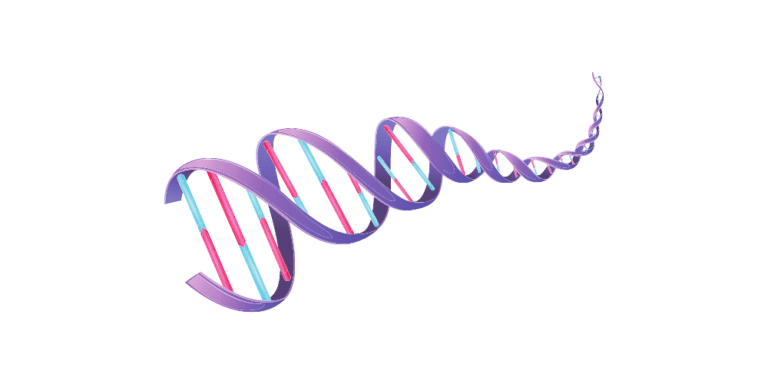ESSENTIAL AMINO ACIDS: DEFINITION, BENEFITS AND FOOD SOURCES

Amino acids are chemical compounds composed of nitrogen, carbon, hydrogen, and oxygen, as well as a varied side chain. Sometimes known as “protein building blocks,” they are biological compounds that perform a range of critical tasks in the body. They are required for critical functions like as protein synthesis and hormone and neurotransmitter production. Some may also be used as supplements to aid in sports performance or mood enhancement. They are classified as essential, conditionally essential, or non-essential based on a number of criteria. The human body has hundreds of distinct proteins, which are composed of twenty distinct amino acids. Nine of the twenty amino acids are essential, which means they cannot be produced by the body and must be obtained from diet. Only a few of the necessary amino acids present in the human body include histidine, isoleucine, leucine, lysine, methionine, phenylalanine, threonine, tryptophan, and valine. Every one of the nine essential amino acids has a distinct purpose in the body. They provide critical functions such as tissue development, energy generation, immunological function, and nutrition absorption.
The Nine Amino Acids and Their Functions in the Human Body
Phenylalanine is a predecessor of the neurotransmitters tyrosine, dopamine, adrenaline, and norepinephrine. It is essential for protein and enzyme composition and functioning, as well as the biosynthesis of supplementary amino acids.
Valine is one of three branched-chain amino acids, indicating that its chemical structure has a chain that branches off to one side. Valine aids in the development and repair of muscle and is involved in the creation of energy.
Threonine is an integral part of structurally proteinases and elastin, which have been found in the skin and connective tissue. Additionally, it has a role in energy oxidation and the immune system.
Though tryptophan is often associated with tiredness, it performs a range of other functions. Tryptophan is necessary for appropriate infant development and acts as a precursor to the neurotransmitters serotonin and melatonin. Serotonin is a neurotransmitter that regulates appetite, sleep, mood, and pain. Melatonin is also involved in the sleep-wake cycle. Tryptophan is a sedative and is a component of several sleep aids. According to one research, tryptophan supplementation may help healthy women boost their brain activity and emotional processing.
Methionineis a critical component of metabolic and detoxifying processes. Additionally, it is required for tissue development and the absorption of zinc and selenium, two critical elements for health.
Leucine is a branched-chain amino acid, like valine, that is required for protein synthesis and muscle repair. Additionally, it aids in glucose regulation, promotes wound healing, and creates growth hormones.
Isoleucine is the last of the three branched-chain amino acids, isoleucine plays an important role in muscle metabolism and is found in high concentration in muscle tissue. Additionally, it has a role in immunological function, hemoglobin synthesis, and energy management.
Lysine is required for protein synthesis, the creation of hormones and enzymes, and calcium absorption. Additionally, it is necessary for the creation of energy, immunological function, and collagen and elastin formation.
Histidine promotes growth, blood cell formation, and tissue healing. Additionally, it helps maintain the myelin sheath, a coating layer that covers nerve cells. The body converts histidine to histamine, a substance necessary for immunological functioning, reproductive health, and digestion. According to the results of a study including obese or metabolic syndrome women, histidine supplements may aid in the reduction of BMI and insulin resistance. Anemia may be caused by deficiency, and it seems that patients with arthritis and renal illness are more likely to have low blood levels.
SUPPLEMENTATION WITH ESSENTIAL AMINO ACIDS HAS NUMEROUS HEALTH BENEFITS
Leucine stimulates protein synthesis in the body, the process by which muscle is created . Muscle atrophy is a common effect of prolonged illness and bed rest, especially in the elderly. According to one study, individuals who got a drink containing 5.6 grams of essential amino acids enhanced muscle protein synthesis by 22% more than those who got a placebo drink after resistance training. In a 10-day experiment of 22 older adults on bed rest, it was shown that those given 15 grams of mixed essential amino acids sustained muscle protein synthesis, but those given a placebo had the process decrease by 30%. (22 Reliable Source). Supplementing with necessary amino acids has also been demonstrated to help older adults and athletes maintain lean body mass.
Perhaps Assists in the Improvement of Mood and Sleep Tryptophan is essential for the production of serotonin, a neurotransmitter molecule found in your body. Serotonin is a neurotransmitter that is involved in the control of mood, sleep, and behavior. While low serotonin levels have been linked to depression and sleep problems, several studies have shown that supplementing with tryptophan may help ease depressive symptoms, improve mood, and improve sleep. Melatonin has an effect on the body’s circadian rhythm. This cycle has an effect on a variety of other processes, such as food metabolism and the immune system.
Numerous studies have shown that supplementing with tryptophan improves sleep by boosting melatonin levels. According to one research, people who ate tryptophan-enriched cereal for breakfast and supper fell asleep quicker and slept longer than those who ate ordinary cereals. Anxiety and sadness symptoms were also decreased, and tryptophan is likely to have contributed to the rise in serotonin and melatonin Can Help You Perform Better During Exercise. Three critical branched-chain amino acids are often utilized to combat tiredness, enhance sports performance, and promote muscle regeneration after exercise. In 16 resistance-trained athletes, branched-chain amino acid supplementation increased performance and muscle regeneration when compared to a placebo. A recent evaluation of eight trials found that supplementation with branched-chain amino acids was much more effective than rest in terms of muscle regeneration and post-exercise pain.. In less than 30 minutes, amino acids are absorbed by the body. This implies that amino acids can be taken immediately when our bodies need them, making them perfect for sports and training. The primary advantages of amino acids are increased endurance, faster recovery from tiredness, and decreased muscular pain. Additionally, amino acids have been shown to be beneficial in the treatment of metabolic syndrome.
Weight Loss May Be Facilitated Supplementing with specific necessary amino acids may assist in improving mood, enhancing exercise performance, preventing muscle loss, and promoting weight reduction. The calorie content of amino acids is four per gram. This corresponds to the calorie content of glucose, a component of table sugar. However, when amino acids are eaten as supplements, they are ingested in trace levels. As a result, they are low in calories, and it is quite improbable that they would cause weight gain. Methionine, an essential amino acid, and arginine and glutamine, non-essential amino acids, may be able to do this and aid in weight reduction.
There is some evidence that taking these amino acid supplements before night on an empty stomach will boost STH production and fat reduction. In an eight-week trial of 36 strength-trained men, supplementing with 14 grams of branched-chain amino acids daily resulted in a substantial drop in body fat percentage when compared to whey protein or a sports drink. In rats, a diet supplemented with 4% leucine decreased body weight and fat (PLoS one 6, no. 6 (2011): e21187).
AMINO ACIDS FROM FOOD SOURCES
These are just a few foods that provide an excellent source of vital amino acids. All meals containing both animal and plant products, such as meat, eggs, quinoa, and soy, are termed complete proteins since they include all nine necessary amino acids.
Proteins derived from plants or animals will include at least a portion of the required amino acids.
These important substances are present in a variety of animal and plant-based meals, assisting individuals in meeting daily nutritional requirements via a balanced diet. While it is possible to be lacking in critical amino acids, the majority of individuals may acquire sufficient amounts with a protein-rich diet. The following are a few of these foods:




